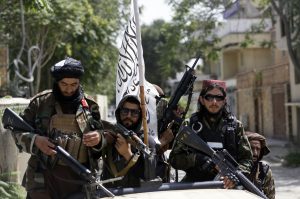One of the feared repercussions of the Taliban’s return to power after 20 years is the potential for international terrorism to destabilize the surrounding region, including Central Asia. Yet in the months that have followed the fall of Kabul in August, the situation in Central Asia has not been particularly unstable. Will that change? Considering the 30-year history of independence of Central Asian countries, it seems unlikely.
People tend to imagine Central Asia as a region of instability, but while it is certainly non-democratic, it does in fact have several stable, long-term governments, and terrorist incidents are not especially frequent. Certainly, the situation was more turbulent about 20 years ago when the guerrillas of the Islamic Movement of Uzbekistan (IMU) tried to invade Uzbekistan from their bases in Tajikistan in 1999, fought battles in Kyrgyzstan (Kyrgyz Republic) on the way, and abducted some Japanese engineers. However, this was largely due to the synergy generated by the radicalization of certain elements of the “Islamic revival” movement in Uzbekistan and the suppression of religious activities by the Karimov administration in that country, with the Tajikistani Civil War (1992-1997) acting as an auxiliary factor. In fact, the impact from outside Central Asia was minor.
When the IMU lost ground even in Tajikistan it moved to Afghanistan. There it became indebted to the then Taliban administration and Al-Qaeda, engaged in combat in Afghanistan and Pakistan, and was decimated as a result. Today, the remnants of IMU have joined the Islamic State-Khorasan Province (ISKP), but they are not in a position to threaten their home country.
Since then, terrorist incidents have been relatively rare, with most of the perpetrators those steeped in extremism in their home countries or Russia.
One exception occurred in the early 2010s, when some Kazakhs joined an organization affiliated with the IMU that was fighting in Afghanistan, resulting in a spate of terrorist incidents in Kazakhstan, but the activities remained small and short-lived. Generally, it has been rare for extremists to move from Afghanistan into Central Asia; rather, it is more common for small numbers of extremists from Central Asia to flee to Afghanistan, where they have tended to remain stuck. Although there are terrorists from Central Asia active in Syria, Iraq, Russia, Europe, and elsewhere, they rarely bring their activities home. Moreover, the perpetrators of terrorist incidents in Central Asia are nearly always locals and not from outside the region.
Nevertheless, Central Asia tends to be seen as an area of rampant international terrorism, partly because of exaggeration by international media outlets and partly because international terrorism is an issue that can be manipulated by countries both in Central Asia and outside the region for their own purposes. Central Asian administrations play up the possibility of links between domestic opposition parties and exiles with international terrorist organizations to justify political repression and the strengthening of security agencies. A good example of this is the outlawing of the Islamic Renaissance Party of Tajikistan in 2015.
Russia and China showcase their opposition to international terrorism within the frameworks of the Collective Security Treaty Organization (CSTO) and the Shanghai Cooperation Organization (SCO), which allows them to emphasize the significance of regional cooperation centered on themselves, and are bolstering their influence in Central Asia through military cooperation. In particular, China can forestall its neighbors’ criticism of the oppression of Chinese Muslims by framing the Xinjiang (East Turkestan) independence movement, which arose domestically, as an international terrorism issue. The United States also established U.S. military bases and temporarily heightened its presence in Uzbekistan and the Kyrgyz Republic as part of the “War on Terrorism” after the 9/11 attacks in 2001. Even after it was forced to withdraw, cooperation on international terrorism and the Afghan situation has been a pillar of the US Central Asian policy.
Of course, security policy is also about preparing for low-probability events, and the governments of Central Asian and other relevant countries are not entirely dissembling when they advertise threats of terrorism. Although few in number, militants fleeing from Tajikistan to Afghanistan and operating in the border regions are a legitimate cause for concern in Tajikistan. There is no guarantee that future changes in the international and Afghan situations will not cause terrorist organizations to become more active.
Yet we need to understand that many extremists emerged from the political, social, and economic backgrounds of their home countries and that they are hostile to their own governments; the potential for international terrorist organizations advocating global jihad to expand their influence also depends on the situation of the country in which they are trying to expand. Effective countermeasures will be hard to produce if we insist on thinking of international terrorism as something that spreads haphazardly like a virus, ignoring the circumstances of individual countries and regions.

































